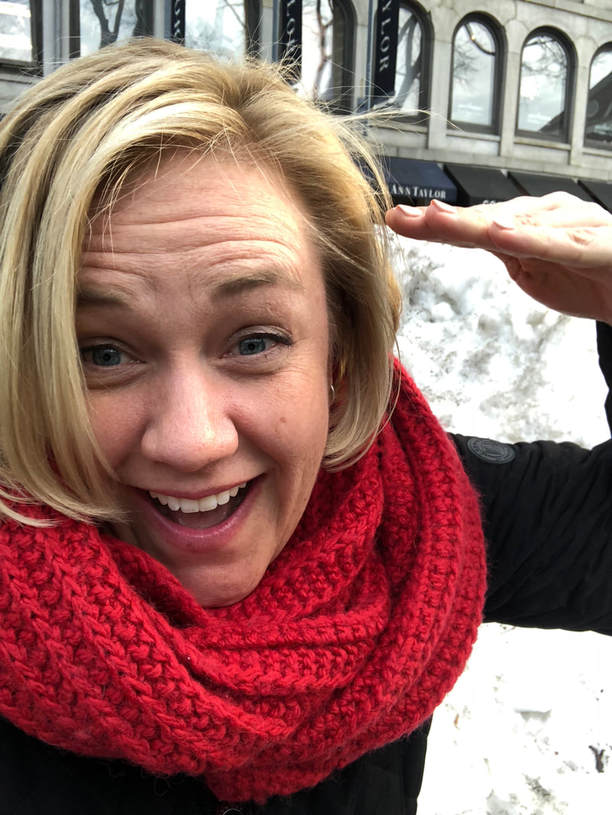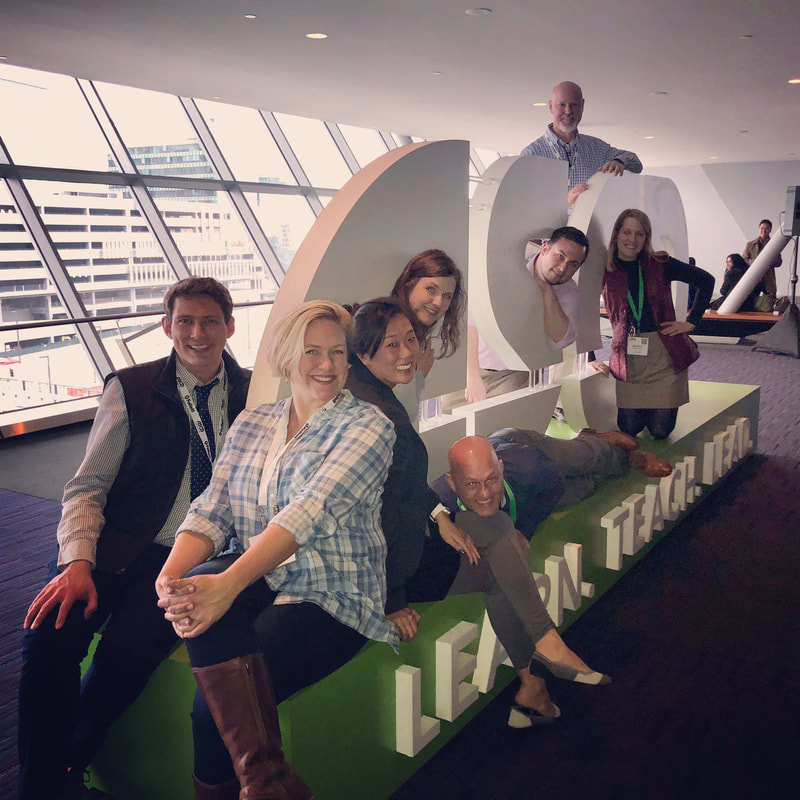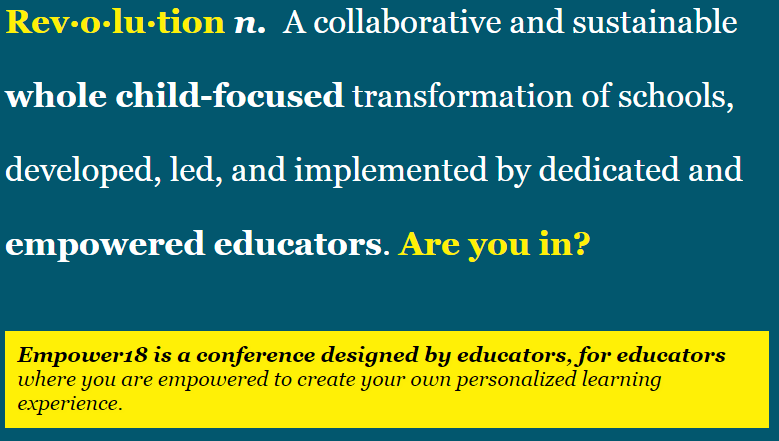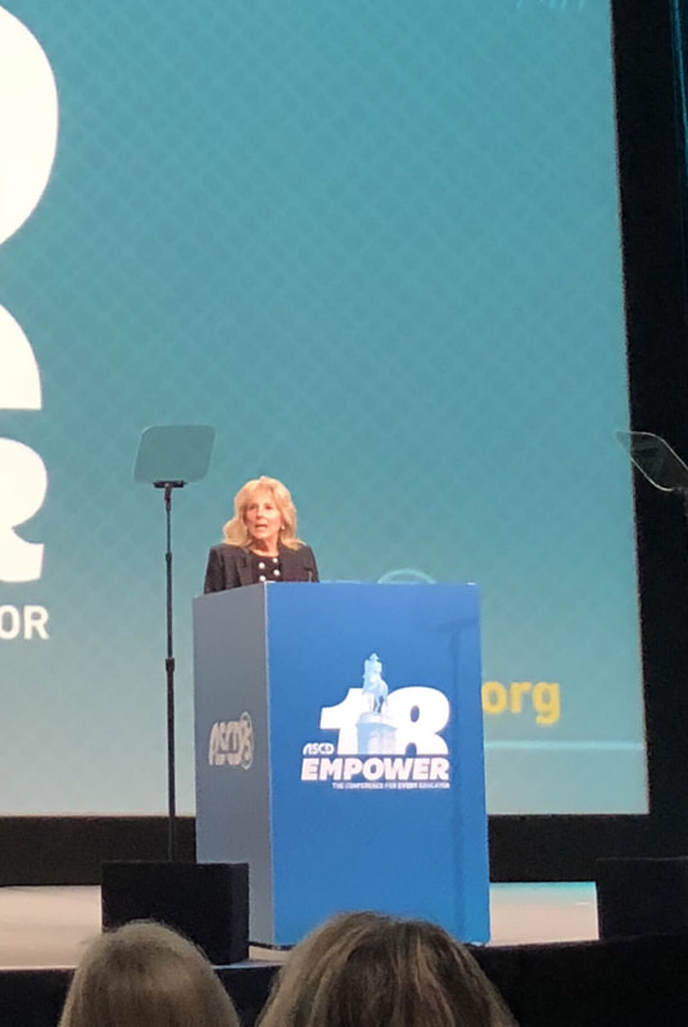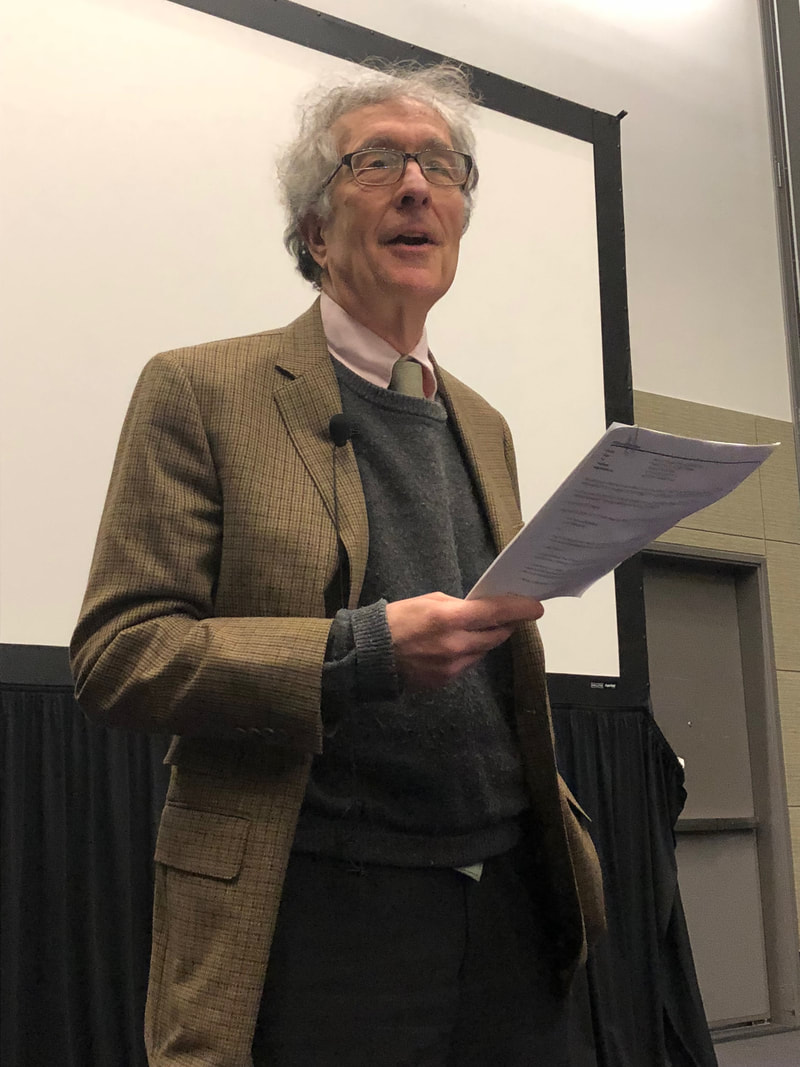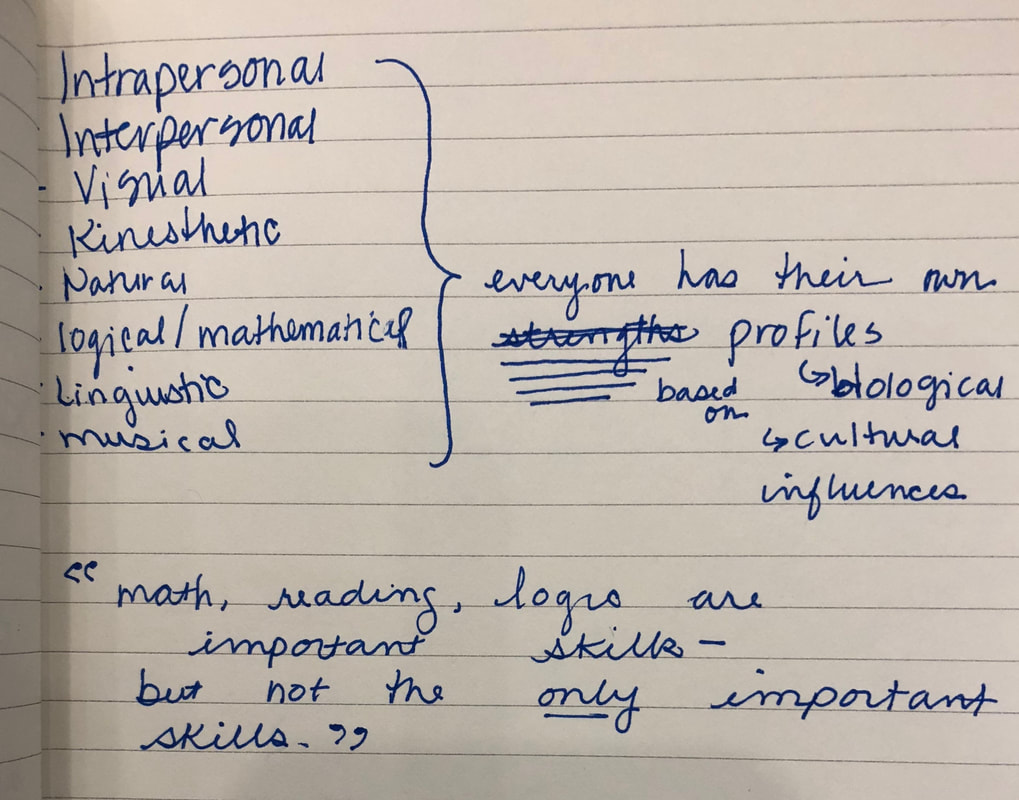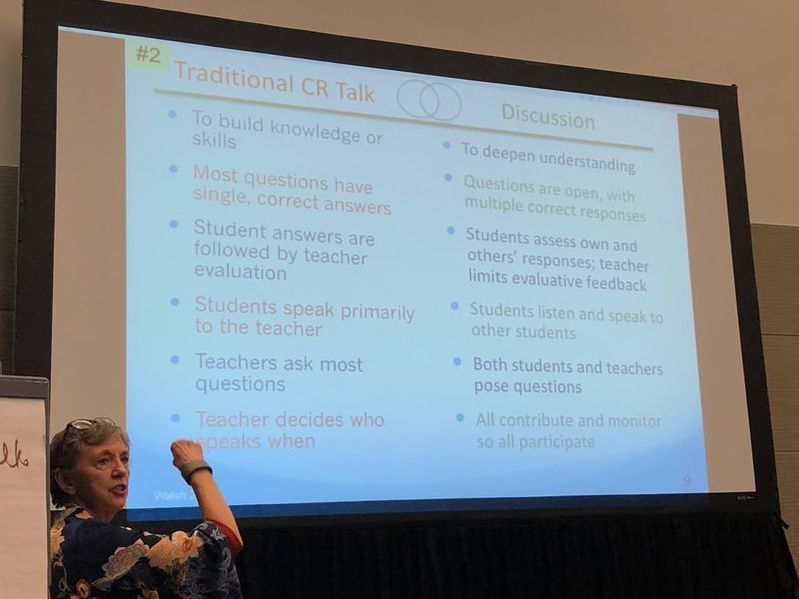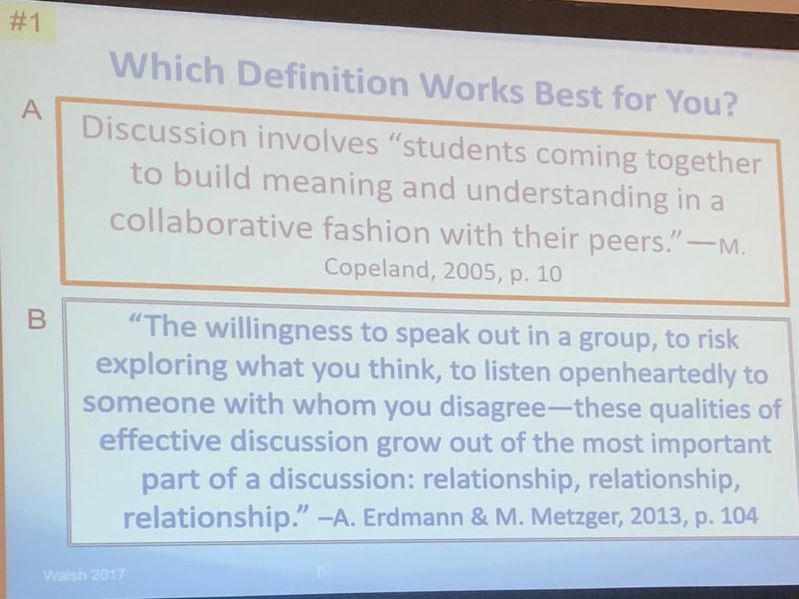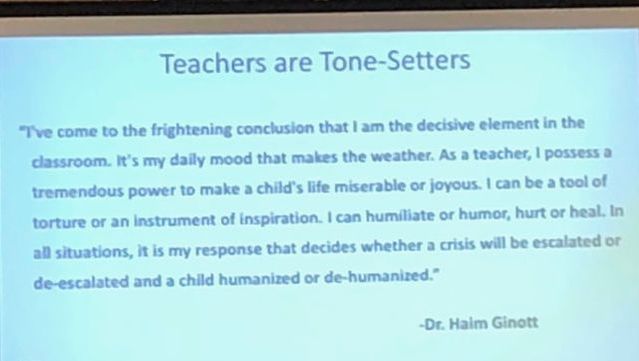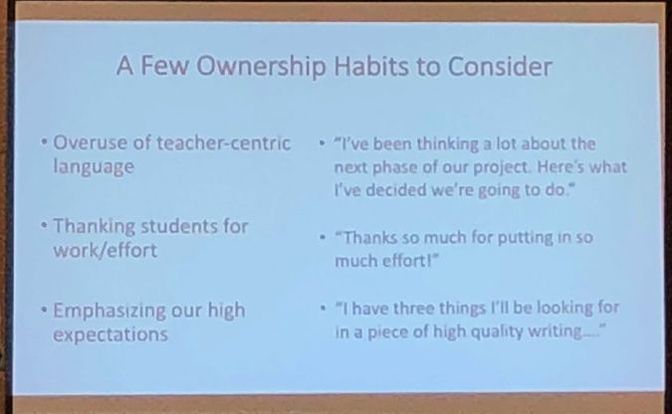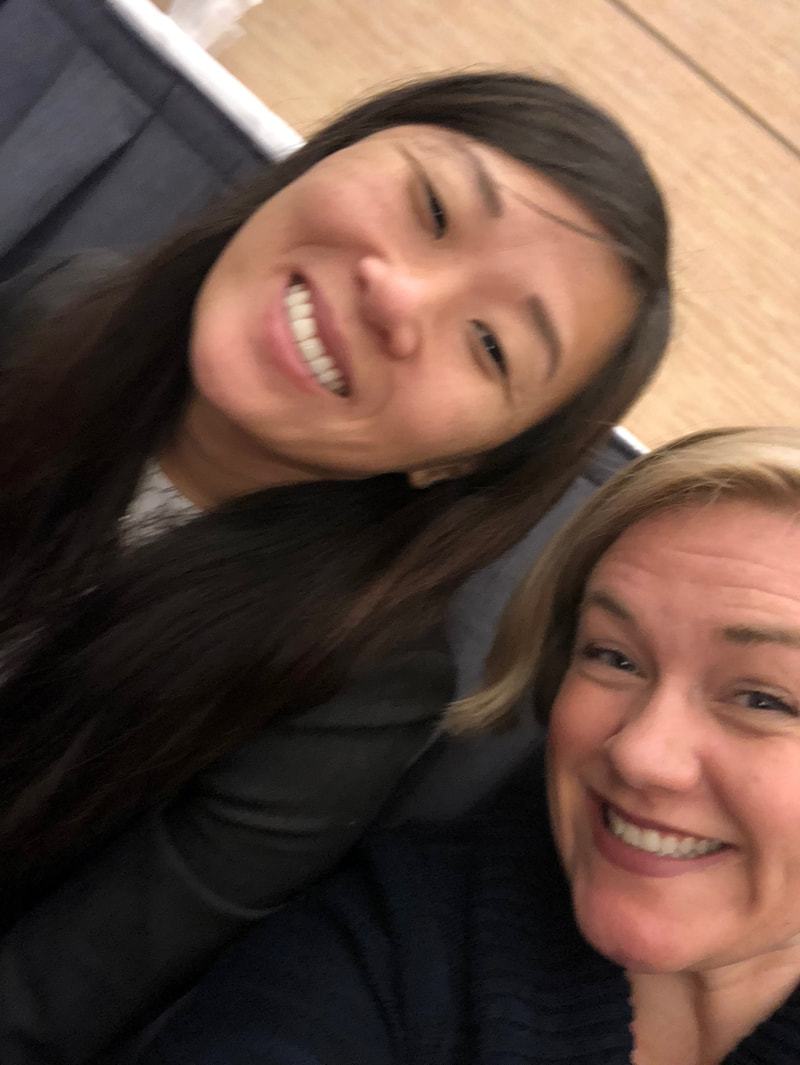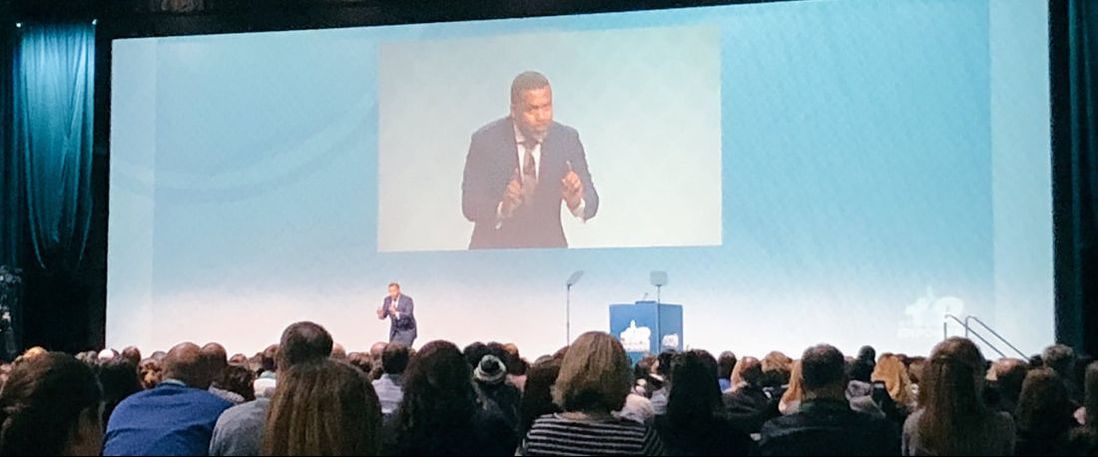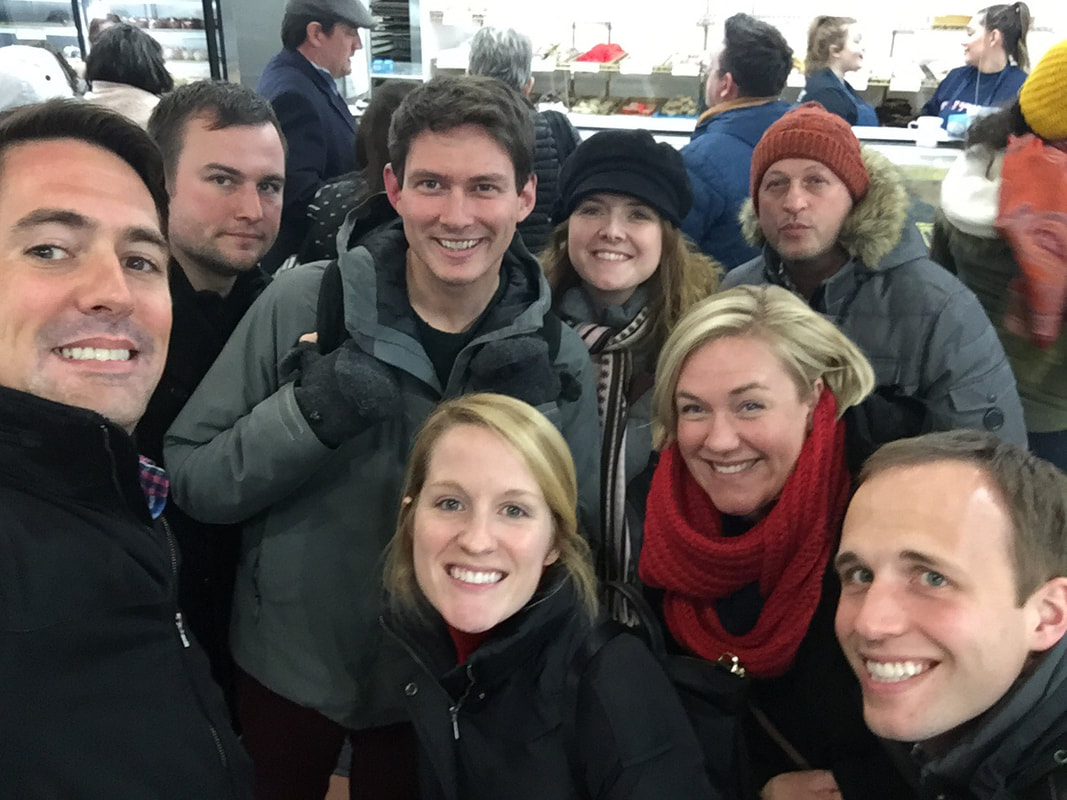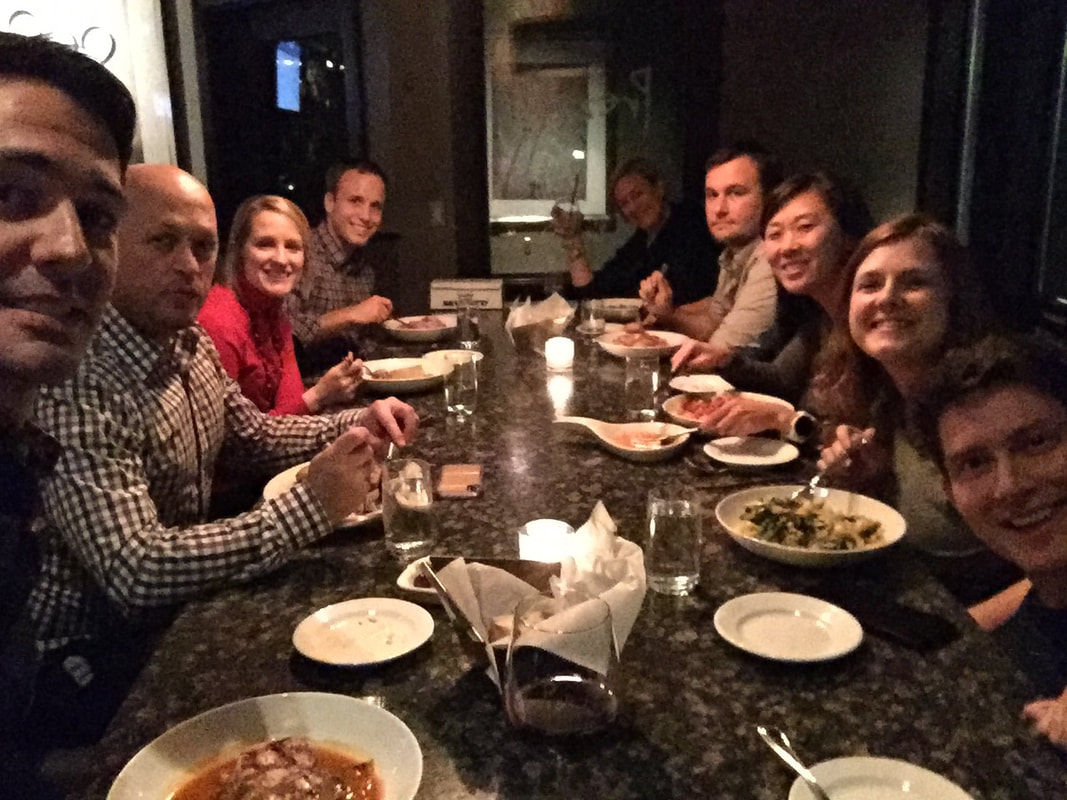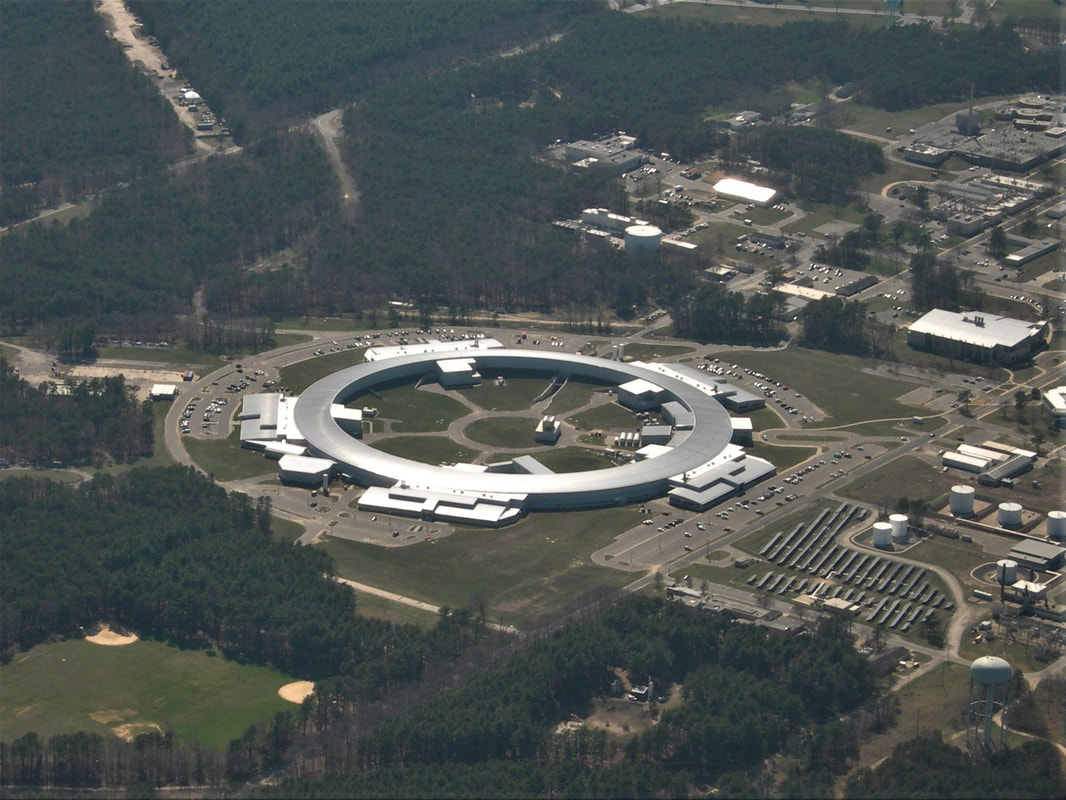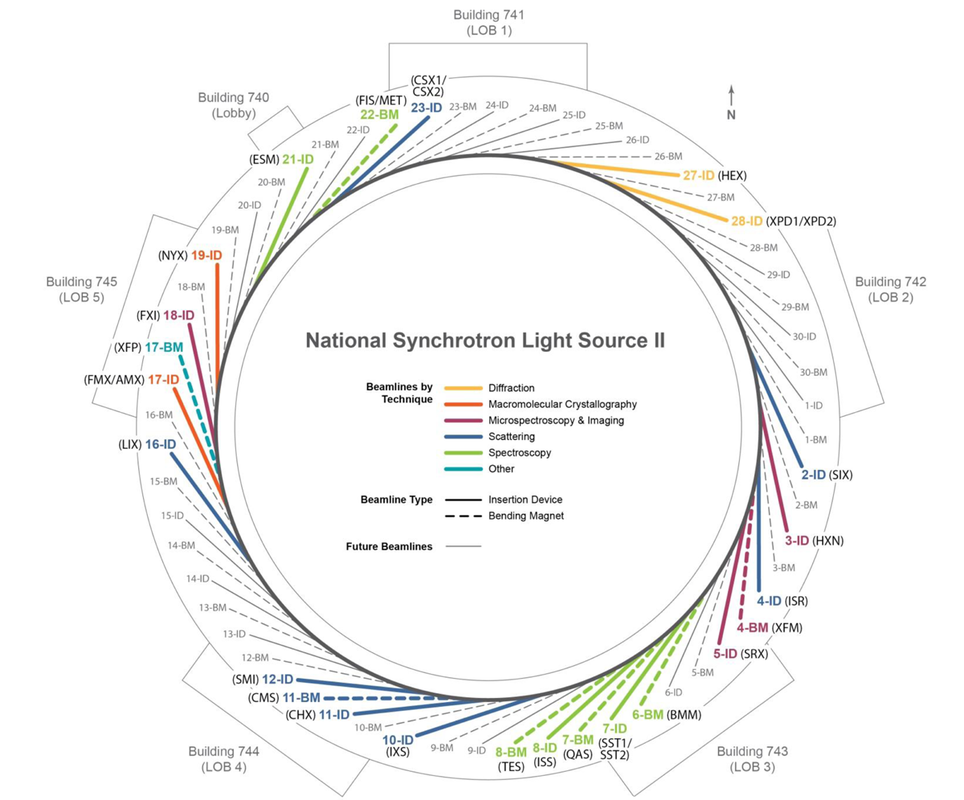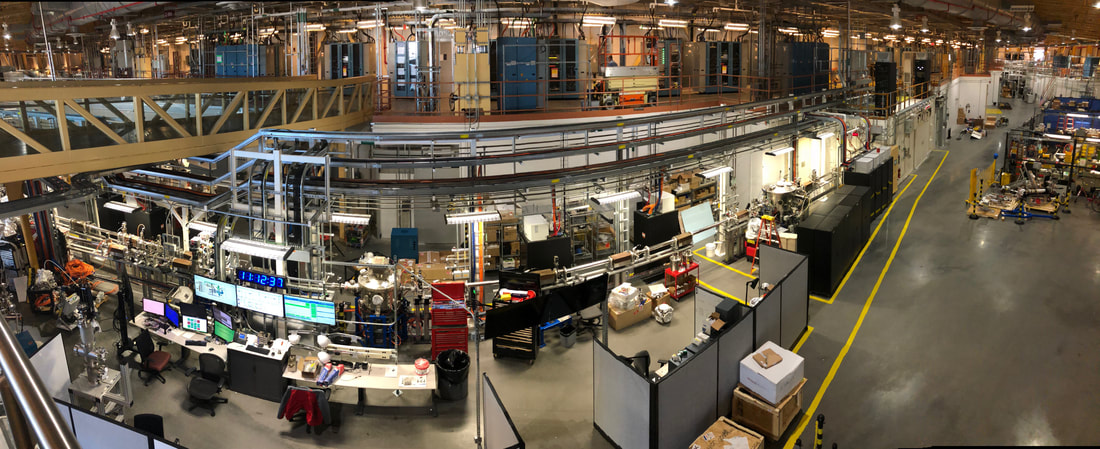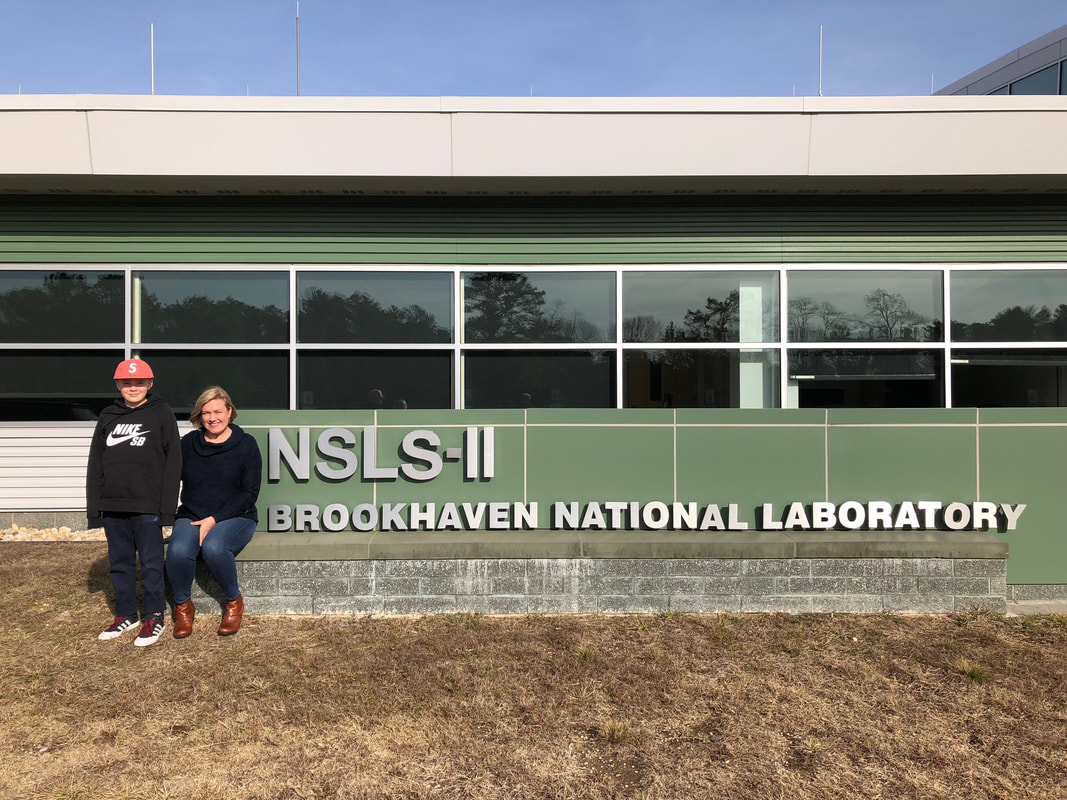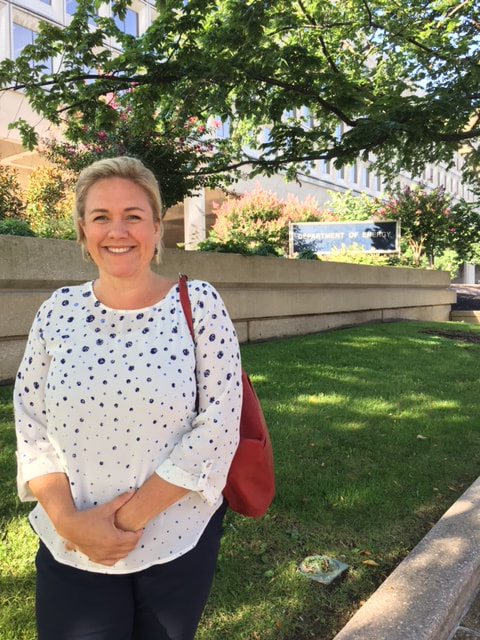|
Thanks to the Einstein Fellowship, many of the current Fellows were able to attend the ASCD Empower18! conference in Boston. Having never been either to Boston or to an ASCD conference, I loved the opportunity to learn and see new things! The ASCD conference is unique because it pulls from a wide variety of education stakeholders. There were district superintendents of major USA urban districts sitting next to kindergarten teachers from rural Canada. Everyone was there to share ideas and learn about how to best serve children, from individualized instruction with kids to whole school and district approaches benefiting the "whole child." The Einstein Fellowship had a booth in the exhibition hall and presented an "Ignite" style presentation at a showcase event. I happily volunteered my time as a "booth babe," however most of the conference was self directed professional development. Some highlights for me included: Opening Remarks by Jill Biden Dr. Jill Biden has dedicated her work to highlighting the importance of education, sacrifices made by military families, and issues surrounding women's health. As second-lady of the United States, she managed all this while continuing to teach as an English professor! Multiple Intelligences in the Classroom About 35 years ago, Howard Gardner shook up the education and psychology worlds with his book Frames of Mind, where the multiple intelligences (MI) were described in detail. MI has been criticized and marginalized by traditional psychologists and the education establishment. Despite efforts to discredit it, MI remains one of the most influential educational theories around the world. This session focused on the legacy of MI that has inspired so many to teach for "human potential" and of the benefits of diversifying instruction as a good pedagogy technique. As the session presenter, Thomas Armstrong said, "MI is a hypothesis about how the mind works, not a classroom strategy, however, using MI often results in high quality instruction because students enjoy learning." Discussing to Learn; Learning to Discuss This session focused on classroom discussion is both a means and an end to student learning. When students speak, listen, and pose questions, they are able to make connections and clarify understandings—both of which contribute to long-term retention and deepening of knowledge. As they learn these skills, they enhance their ability to engage with others in a respectful and productive manner. The presenters modeled good instructional techniques by having the members of the audience engage in dialogue and active, hands-on learning as we explored strategies for use in scaffolding active and respectful listening, thoughtful speaking, and purposeful questioning; honoring norms that contribute to a culture supporting open and respectful dialogue; and approaches for partnering with students to create new roles and responsibilities. What We Say (and How We Say it) Influences Student Learning Teacher words and tone matter. Have you ever said to a student, "I love the way you're working so hard!"? How about, "Here are the three things I'll be looking for in this next piece of work."? Or perhaps you've said, "If you all work really hard for the next 30 minutes, we'll finish class with something fun!" You probably have—we all have. Even though these statements (among many others) are used with the best of intentions, they might actually lead students to disengage and learn less! In this session, I learned about several common language habits and patterns that many educators find themselves in and had a chance to explore better alternatives. More information can be found here. The Power of the Adolescent Brain Of all the sessions I attended, this was probably my favorite because it occurred at a time when adolescents were taking to the street to "March for Our Lives," and serving as the primary drivers of a social movement. To me, such behaviors proves that the adolescent brain is crazy; it's a powerful brain that can be used for a lot of good. I think I most love working with teenagers because they are passionate, committed to causes and idealistic. Also, as a mom of a young adolescent, I appreciated the reminder of the biology occurring within the brain of a person I love like no other. “This is the time when they need the most love, but are often the hardest to love.” The session started with an inventory for participants to review their own adolescence experience and then share it with a partner. Then, the presenter and author Thomas Armstrong shared eight key neuroscience findings about the adolescent brain which all secondary school educators need to be familiar with and eight "adolescent brain friendly" classroom interventions based on those findings. These interventions included giving teens choices in their learning; providing them with self-awareness activities for their burgeoning identities; creating peer-learning connections; integrating affective learning, expressive arts, and kinesthetic approaches into the curriculum; using metacognitive strategies; and providing real-world experiences to help prepare adolescents to live independently as future adults. Dr. Armstrong also discussed 10 ''adolescent brain hostile'' strategies currently in use by many secondary schools that subvert teenagers' developmental needs. In fact, adolescence might be the time when the brain is most vulnerable to the stress response. As Dr. Armstrong pointed out, "stress does serious damage to their pyche and brain.” How to REACH Youth Today Relationships are the foundation upon which all great learning takes place. Manny Scott, original Freedom Writer and founder of Ink International Inc., presented a keynote address exploring how to cultivate healthy relationships with students and all youth so that they can excel in school and come out prepared for work and life. By sharing life-changing lessons he has learned from teachers and loving adults who helped him and from the work he has been doing with kids for the past 18 years, Scott expressed how, together, we can transform our schools into safe, positive environments where all adults are equipped to reach kids and all kids are empowered to reach their destinies. This session was a reminder of the incredible power every adult has to help young people flourish. For me, two take away quotes were: “If I can help others, than my living is not in vain.” "Even on your worst day you can still be someone’s best hope.” It was great to be in Boston with many of the other Einstein Fellows. We got to spend some time together in the city and at the conference. One of the best aspects of this fellowship has been meeting other educators from around the country. I am thankful for them and for the network we have built.
I am serving my year as an Einstein Fellow with in the Office of Science in the Department of Energy. As quoted from the SC website, the Office manages “Advanced Scientific Computing Research, Basic Energy Sciences, Biological and Environmental Research, Fusion Energy Sciences, High Energy Physics, and Nuclear Physics." In addition, the Office of Science manages and supports additional programs and activities, including: the Workforce Development for Teachers and Scientists program (the group in which I am placed), the DOE Small Business Innovation Research Small Business Technology Transfer programs, and the Office of Project Assessment. The Office of Science is the largest funder of physical science research in the United States. As a biologist who has a comfort level that spans from the atomic to ecosystem levels of organization, the discoveries of the Fusion Energy Sciences, High Energy Physics and Nuclear Physics offices actually kind of blow my mind! I've learned a lot, and readily admit that I needed to Google search to help me comprehend some of the terms I've been learning and how they connect to the parts of matter that I recognize! I am definitely thinking of my IB physics teacher friend/colleague and how she would love to know what I am doing right now! The Office of Science is also the steward of 10 of the 17 DOE laboratories; these 10 laboratories provide essential support to the missions of the Office of Science programs. One of the benefits of being an Einstein Fellow placed in the Office of Science is the ability to visit some of the national laboratories. I have been to Brookhaven National Lab (on Long Island, NY) and will soon be visiting Pacific Northwest National Lab (in Richland, WA). I would like to get to two more labs before my fellowship is complete.
As a high school teacher, I was curious about what skills and attributes they most desire in undergraduate and graduate students applying for internship positions at the lab. The list of descriptors included:
A highlight of my visit to Brookhaven was a visit to their National Synchrotron Light Source-II. The light source generates a intense X-ray, infrared and ultraviolet beams that are able to resolve images down to the nanometer scale. There are currently 19 running beam linesI had a wonderful discussion with one of their staff scientists about how the light source functions and its uses in the materials and biological sciences. As a result of my visit, I have a deepened understanding of the Nature of Science and the magnitude of effort required to learn about things at orders of magnitude beyond the visible. A synchrotron is a ring of electrons moving very, very fast (near the speed of light). Because of physics that I do not really understand, the circulating electrons emit photons which can be "peeled off" the ring, traveling at a wavelength of interest, into a beam line. Beam lines are the spokes that run tangent to the accelerator ring and contain a slew of impressive instrumentation that can focus the photon onto a sample for imaging. The NSLS-II currently has 19 functioning beam lines, each of which takes 5-6 years to get running. Because they are such massive investments of time and money there are just four synchrotrons in the USA. The one I visited has the brightest beam in the middle energy range and is primarily used to the study of materials science, such as the live functioning of batteries, semi- and superconductors.
|
Archives
July 2018
|
I give many of my IB Biology resources away, for the benefit of students and teachers around the world.
If you've found the materials helpful, please consider making a contribution of any amount
to this Earthwatch Expedition Fund.
Did I forget something? Know of a mistake? Have a suggestion? Let me know by emailing me here.
Before using any of the files available on this site,
please familiarize yourself with the Creative Commons Attribution License.
It prohibits the use of any material on this site for commercial purposes of any kind.
If you've found the materials helpful, please consider making a contribution of any amount
to this Earthwatch Expedition Fund.
Did I forget something? Know of a mistake? Have a suggestion? Let me know by emailing me here.
Before using any of the files available on this site,
please familiarize yourself with the Creative Commons Attribution License.
It prohibits the use of any material on this site for commercial purposes of any kind.
